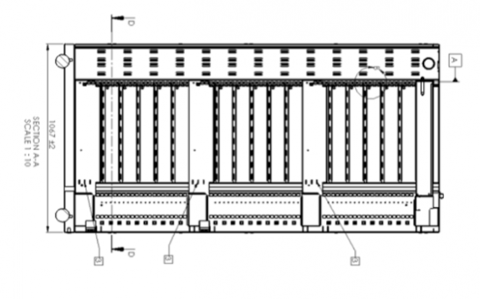 Before he committed suicide this past January, Aaron Swartz was working on a special open-source project with Wired editor Kevin Poulsen and a group of volunteers. They had a simple goal: create an online tool that anonymous sources could use to safely leave documents and other data with a particular publication. Swartz may be gone, but the project is now seeing the light as DeadDrop, described on Github as “a server application intended to let news organizations and others set up an online drop box for courses.” The platform includes code, installation scripts, setup instructions, and a “hardened” Ubuntu environment. The software can be modified and redistributed under the terms of the GNU Affero General Public License version 3 or later (as published by the Free Software Foundation). “The code is a Python application that accepts messages and documents from the web and GPG-encrypts them for secure storage,” the Github description added. “Essentially, it's a more secure alternative to the ‘contact us’ form found on a typical news site.” In contrast to that typical ‘contact us’ form, in which the user is obligated to leave some sort of concrete identifier—whether their real name, email, or some other bit of digital spoor—DeadDrop assigns the user a codename that masks his or her identity. On the news organization’s side of the equation, the user is recognized by a different codename altogether, creating a second layer of protection. The source “can enter the code name on a future visit to read any messages sent back from the journalist—‘Thanks for the Roswell photos! Got any more??’—or submit additional documents or messages under the same persistent, but anonymous, identifier,” is how the Github description frames the whole process. The New Yorker is using DeadDrop as the basis for its just-released Strongbox. “To help protect your anonymity, Strongbox is only accessible using the Tor network (https://www.torproject.org),” the publication wrote in a note. “When using Strongbox, The New Yorker will not record your I.P. address or information about your browser, computer, or operating system, nor will we embed third-party content or deliver cookies to your browser.” The physical servers backing Strongbox are located in a physically and logically segregated area at a secure data center, and don’t overlap The New Yorker or its parent company’s existing infrastructure. But that doesn’t mean the software can provide airtight security; if the user shares their codename or if their computer is hacked, for instance, it could compromise any communications via Strongbox. In a blog posting, Kevin Poulsen described the aftermath of Swartz’s death and the decision to work with The New Yorker to use the software. Sean Palmer, the executor of Swartz’s intellectual property, apparently approved of the project, as did Swartz’s friends and family. “The New Yorker, which has a long history of strong investigative work, emerged as the right first home for the system,” Poulsen wrote. And thus, Strongbox. Image: The New Yorker
Before he committed suicide this past January, Aaron Swartz was working on a special open-source project with Wired editor Kevin Poulsen and a group of volunteers. They had a simple goal: create an online tool that anonymous sources could use to safely leave documents and other data with a particular publication. Swartz may be gone, but the project is now seeing the light as DeadDrop, described on Github as “a server application intended to let news organizations and others set up an online drop box for courses.” The platform includes code, installation scripts, setup instructions, and a “hardened” Ubuntu environment. The software can be modified and redistributed under the terms of the GNU Affero General Public License version 3 or later (as published by the Free Software Foundation). “The code is a Python application that accepts messages and documents from the web and GPG-encrypts them for secure storage,” the Github description added. “Essentially, it's a more secure alternative to the ‘contact us’ form found on a typical news site.” In contrast to that typical ‘contact us’ form, in which the user is obligated to leave some sort of concrete identifier—whether their real name, email, or some other bit of digital spoor—DeadDrop assigns the user a codename that masks his or her identity. On the news organization’s side of the equation, the user is recognized by a different codename altogether, creating a second layer of protection. The source “can enter the code name on a future visit to read any messages sent back from the journalist—‘Thanks for the Roswell photos! Got any more??’—or submit additional documents or messages under the same persistent, but anonymous, identifier,” is how the Github description frames the whole process. The New Yorker is using DeadDrop as the basis for its just-released Strongbox. “To help protect your anonymity, Strongbox is only accessible using the Tor network (https://www.torproject.org),” the publication wrote in a note. “When using Strongbox, The New Yorker will not record your I.P. address or information about your browser, computer, or operating system, nor will we embed third-party content or deliver cookies to your browser.” The physical servers backing Strongbox are located in a physically and logically segregated area at a secure data center, and don’t overlap The New Yorker or its parent company’s existing infrastructure. But that doesn’t mean the software can provide airtight security; if the user shares their codename or if their computer is hacked, for instance, it could compromise any communications via Strongbox. In a blog posting, Kevin Poulsen described the aftermath of Swartz’s death and the decision to work with The New Yorker to use the software. Sean Palmer, the executor of Swartz’s intellectual property, apparently approved of the project, as did Swartz’s friends and family. “The New Yorker, which has a long history of strong investigative work, emerged as the right first home for the system,” Poulsen wrote. And thus, Strongbox. Image: The New Yorker A Last Aaron Swartz Project Sees the Light of Day
 Before he committed suicide this past January, Aaron Swartz was working on a special open-source project with Wired editor Kevin Poulsen and a group of volunteers. They had a simple goal: create an online tool that anonymous sources could use to safely leave documents and other data with a particular publication. Swartz may be gone, but the project is now seeing the light as DeadDrop, described on Github as “a server application intended to let news organizations and others set up an online drop box for courses.” The platform includes code, installation scripts, setup instructions, and a “hardened” Ubuntu environment. The software can be modified and redistributed under the terms of the GNU Affero General Public License version 3 or later (as published by the Free Software Foundation). “The code is a Python application that accepts messages and documents from the web and GPG-encrypts them for secure storage,” the Github description added. “Essentially, it's a more secure alternative to the ‘contact us’ form found on a typical news site.” In contrast to that typical ‘contact us’ form, in which the user is obligated to leave some sort of concrete identifier—whether their real name, email, or some other bit of digital spoor—DeadDrop assigns the user a codename that masks his or her identity. On the news organization’s side of the equation, the user is recognized by a different codename altogether, creating a second layer of protection. The source “can enter the code name on a future visit to read any messages sent back from the journalist—‘Thanks for the Roswell photos! Got any more??’—or submit additional documents or messages under the same persistent, but anonymous, identifier,” is how the Github description frames the whole process. The New Yorker is using DeadDrop as the basis for its just-released Strongbox. “To help protect your anonymity, Strongbox is only accessible using the Tor network (https://www.torproject.org),” the publication wrote in a note. “When using Strongbox, The New Yorker will not record your I.P. address or information about your browser, computer, or operating system, nor will we embed third-party content or deliver cookies to your browser.” The physical servers backing Strongbox are located in a physically and logically segregated area at a secure data center, and don’t overlap The New Yorker or its parent company’s existing infrastructure. But that doesn’t mean the software can provide airtight security; if the user shares their codename or if their computer is hacked, for instance, it could compromise any communications via Strongbox. In a blog posting, Kevin Poulsen described the aftermath of Swartz’s death and the decision to work with The New Yorker to use the software. Sean Palmer, the executor of Swartz’s intellectual property, apparently approved of the project, as did Swartz’s friends and family. “The New Yorker, which has a long history of strong investigative work, emerged as the right first home for the system,” Poulsen wrote. And thus, Strongbox. Image: The New Yorker
Before he committed suicide this past January, Aaron Swartz was working on a special open-source project with Wired editor Kevin Poulsen and a group of volunteers. They had a simple goal: create an online tool that anonymous sources could use to safely leave documents and other data with a particular publication. Swartz may be gone, but the project is now seeing the light as DeadDrop, described on Github as “a server application intended to let news organizations and others set up an online drop box for courses.” The platform includes code, installation scripts, setup instructions, and a “hardened” Ubuntu environment. The software can be modified and redistributed under the terms of the GNU Affero General Public License version 3 or later (as published by the Free Software Foundation). “The code is a Python application that accepts messages and documents from the web and GPG-encrypts them for secure storage,” the Github description added. “Essentially, it's a more secure alternative to the ‘contact us’ form found on a typical news site.” In contrast to that typical ‘contact us’ form, in which the user is obligated to leave some sort of concrete identifier—whether their real name, email, or some other bit of digital spoor—DeadDrop assigns the user a codename that masks his or her identity. On the news organization’s side of the equation, the user is recognized by a different codename altogether, creating a second layer of protection. The source “can enter the code name on a future visit to read any messages sent back from the journalist—‘Thanks for the Roswell photos! Got any more??’—or submit additional documents or messages under the same persistent, but anonymous, identifier,” is how the Github description frames the whole process. The New Yorker is using DeadDrop as the basis for its just-released Strongbox. “To help protect your anonymity, Strongbox is only accessible using the Tor network (https://www.torproject.org),” the publication wrote in a note. “When using Strongbox, The New Yorker will not record your I.P. address or information about your browser, computer, or operating system, nor will we embed third-party content or deliver cookies to your browser.” The physical servers backing Strongbox are located in a physically and logically segregated area at a secure data center, and don’t overlap The New Yorker or its parent company’s existing infrastructure. But that doesn’t mean the software can provide airtight security; if the user shares their codename or if their computer is hacked, for instance, it could compromise any communications via Strongbox. In a blog posting, Kevin Poulsen described the aftermath of Swartz’s death and the decision to work with The New Yorker to use the software. Sean Palmer, the executor of Swartz’s intellectual property, apparently approved of the project, as did Swartz’s friends and family. “The New Yorker, which has a long history of strong investigative work, emerged as the right first home for the system,” Poulsen wrote. And thus, Strongbox. Image: The New Yorker 

